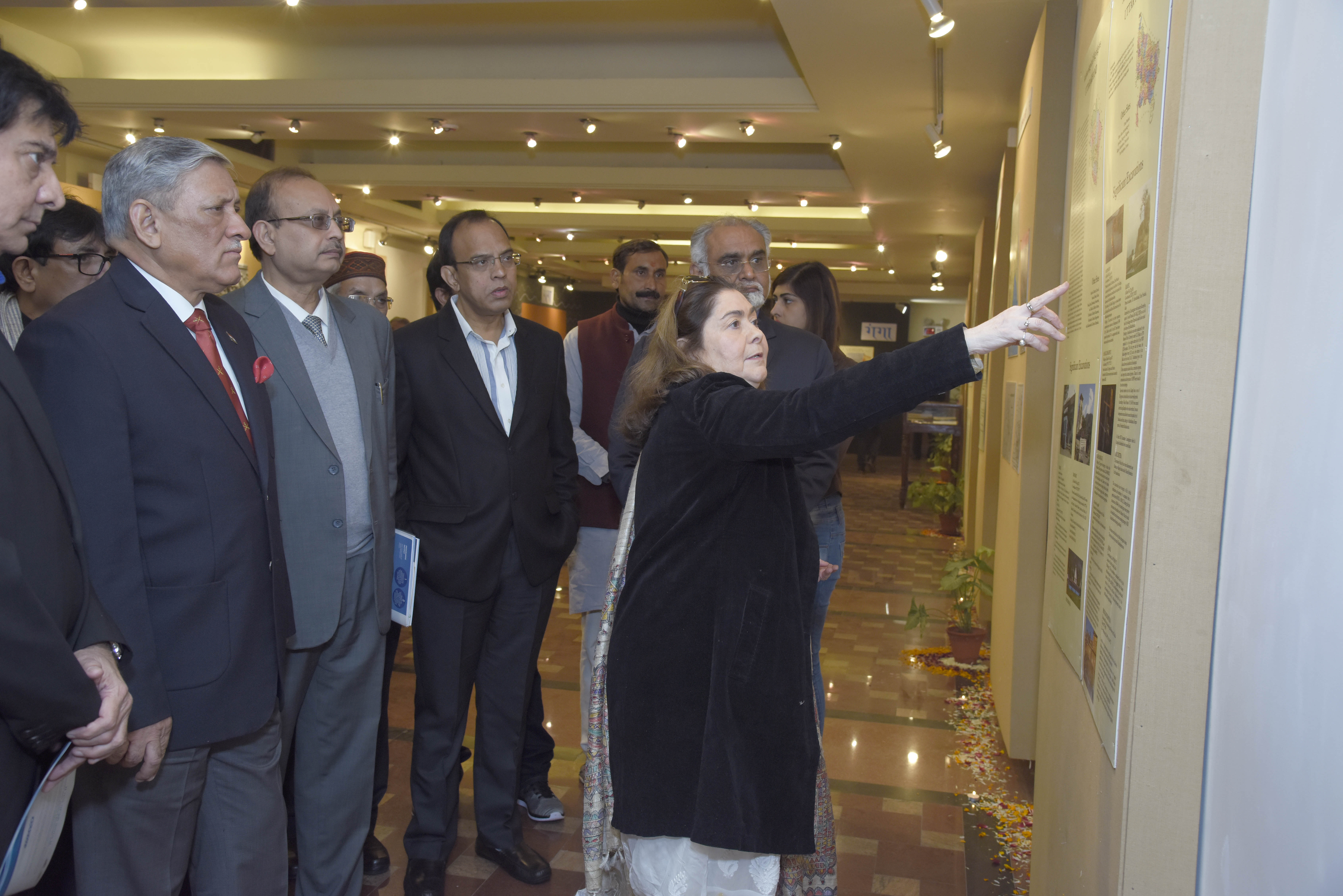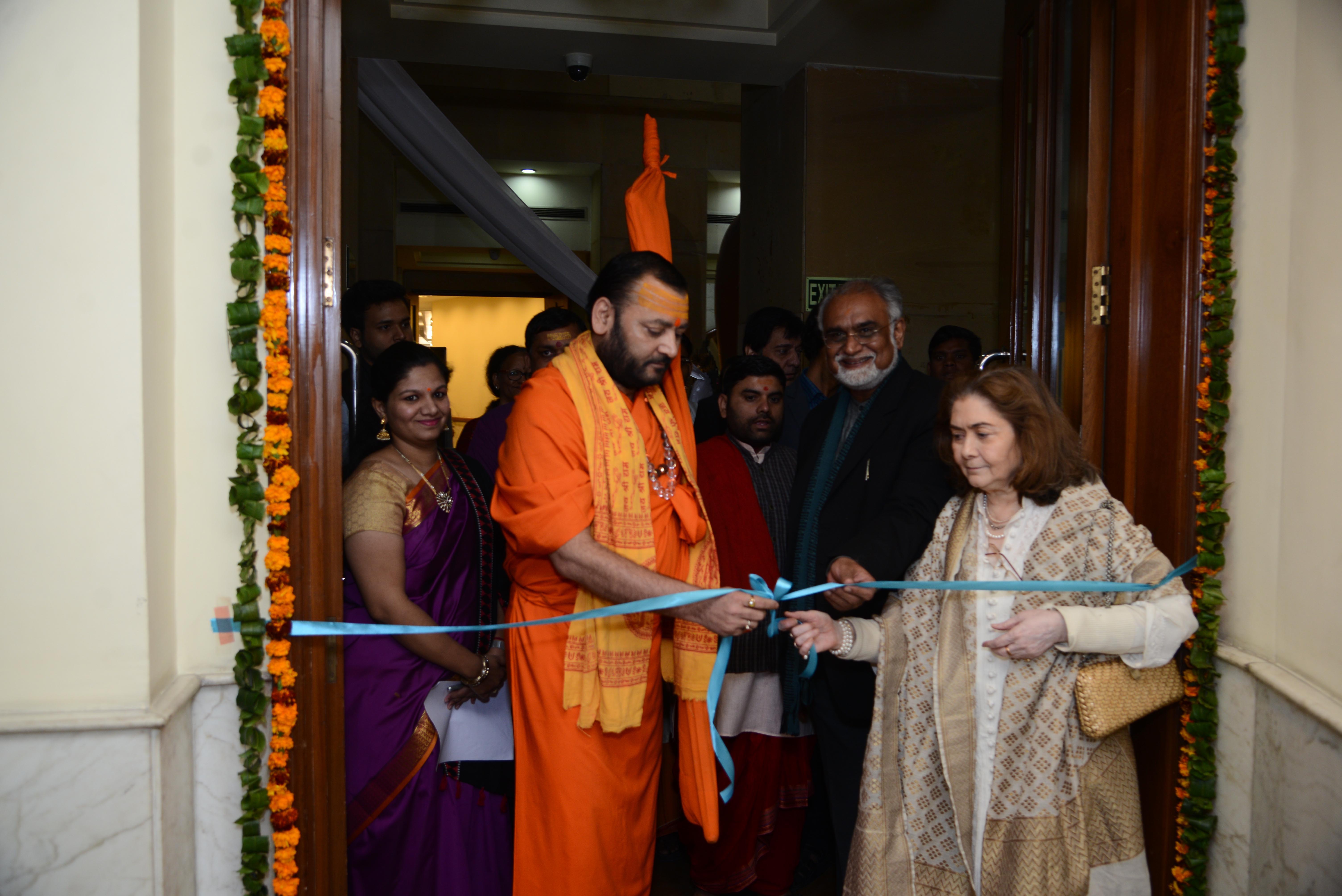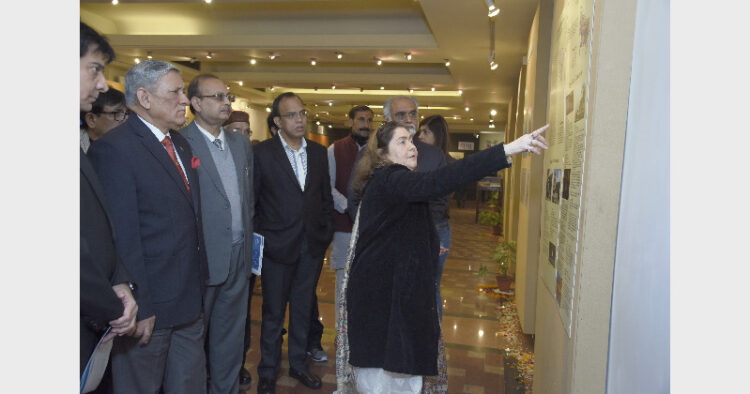
Army Chief General Shri Bipin Rawat at the Exhibition
Dedicated to the theme “Ganga Maa Tujhe Pranam” the 18-day Ganga Utsav organised by Draupadi Dream Trust in New Delhi led people on a unique pilgrimage apprising them of the historicity of the River Ganga and stirring them to preserve her for their survival
New Delhi: The 18-day Ganga Darshan Exhibition held at Indira Gandhi National Centre for the Arts (IGNCA) from December 5 to 23, 2018 stirred the people about preservation of the Ganga. The Exhibition was inaugurated by Jagatguru Shankaracharya Swamy Amritanaddev Tirtha of Sharda Peetham, Kashmir on December 5, while the valedictory ceremony was addressed by Army Chief General Bipin Rawat. Director General of National Mission for Clean Ganga Shri Ranjan Mishra, Member Secretary of IGNCA Dr Sachidanand Joshi and Lt. Gen. (Retd) Vishnu Kant Chaturvedi were also present.
Dedicated to the theme, “Ganga Maa Tujhe Pranam”, the Exhibition was organised by Draupadi Dream Trust to highlight the significance of the Ganga with the objective of rekindling the ‘cultural devotion’ towards the sacred river and take action to keep it clean and flowing.

Addressing the gathering at concluding ceremony, General Bipin Rawat said: “The work undertaken by Draupadi Dream Trust highlighting the importance of the Ganga is commendable. It is important for all Indians to understand the relevance of the River Ganga in our history. I appreciate the mission of Sushri Neera Misra.” He highlighted some examples from different countries where it is mandatory to clean their environments on regular basis. He was surprised that even some foreign countries were aware of the river harvesting in India. He also shared anecdotes about his closeness to Bhagirathi. He raised question over environment imbalance. He appreciated that the Trust has taken up the initiative of creating a cultural connect with the Ganga so that general public is aware of its uniqueness as a source of culture and civilisation, and thus helping to conserve the Ganga. General Shri Rawat also visited the Exhibition where Sushri Neera Misra explained the displays on each of the panels that included an introduction to Ganga, Ganga in Text, Ganga in Science, Cities of Ganga, Ganga in Art, Archaeological section in Ganga, Ganga in Foreign Accounts, Flora and Fauna in River Ganga.
On December 5, Jagatguru Shankaracharya Swamy Amritanaddev Tirtha Maharaj of Sharada Peetham assured to join hands in the mission of keeping the Ganga clean. He hoped that Ganga would not become Sarasvati. He appreciated the first section of the Exhibition displaying Rigveda, Smriti, Ramayana, Mahabharata, the Puranas, Kalidasa, Ganga Lahiri, etc.
In the section Ganga in Science, the archaeology section showcased places excavated by Archaeological Survey of India, identifying various cultural periods like PGW, NBPW OCP and also highlights of important excavation sites like Thapli Ranihat at Uttarakhand, Rajghat at Kashi, Kampilya and Sannauli at Uttar Pradesh, Vikramshila, Patliputra Kumrahar of Bihar and Pandurayadholi / Chandraketugarh from West Bengal. In the section on ‘Ganga Maa ke Palne Mein’, a huge Map of Ganga from Gaumukh to Ganga Sagar depicted the important Cities like Devprayag, Rishikesh, Haridwar, Kashi, Kampilya, Prayagraj, Kanpur, Patna taking us up to the Bay of Bengal and Kolkata. The next category was Ganga in Society showing how the pollution at this holy places of Ganga are caused by humans and it is the responsibility of society to stop using plastic and throwing any waste in Ganga to maintain its purity.
Ganga in Traditions and Rituals was a pictorial delight of various festivals and rituals connected to Ganga. One whole panel of collage on Kumbh scenes made the display very colourful and interesting. Most visitors were intrigued to read and see the accounts of foreigners. This included some significant documentation on Ganga through text and images like famous Fountain in Rome, Italy, by Bernini depicting four major world rivers and Ganga as a Male figure. Another was the wooden plaque inscription in a Swedish Church, in Kiruna, Lapland recalling that the three Frenchmen who had drunk water of River Ganga.
The Ganga in Art was equally educative, covering Art representations from different parts of the country and even abroad like Ivory piece from Afghanistan, one of Nepal origin but now at Bharatkala Benaras. From Ellora to Gupta Coins, Pahari paintings and Raja Ravi Verma’s Ganga Avataran made the displays visually very impressive.
At the Hall entry corner was the masterpiece Terracotta Ganga Statue replica which is the largest excavated piece representing the majestic Maa Ganga at Ahichhetra Panchala, as guardians of the gateway of Siva Temple, Gupta period, 5th Century AD. The entry to Panels of National Mission for Clean Ganga was adorned with a huge replica of the Dah Parvatiya Temple, Assam at Ganga Darshan Exhibition where there was a screen representing movies of Namami Gange.
The 7th International Conference by Draupadi Dream Trust was held on the topic Significance of Ganga River Civilisation Global Spread and Impact from December 5 to 6. 30 scholars from all over the country discussed various aspects of the river. There were 7 academic sessions with 30 speakers. At the concluding session Chairman of IGNCA Shri Ram Bahadur Rai suggested that rather than Ganga Museum, it should be named Ganga Darshan Centres. Dr Sachidanand Joshi suggested that other rivers be included in this.














Comments